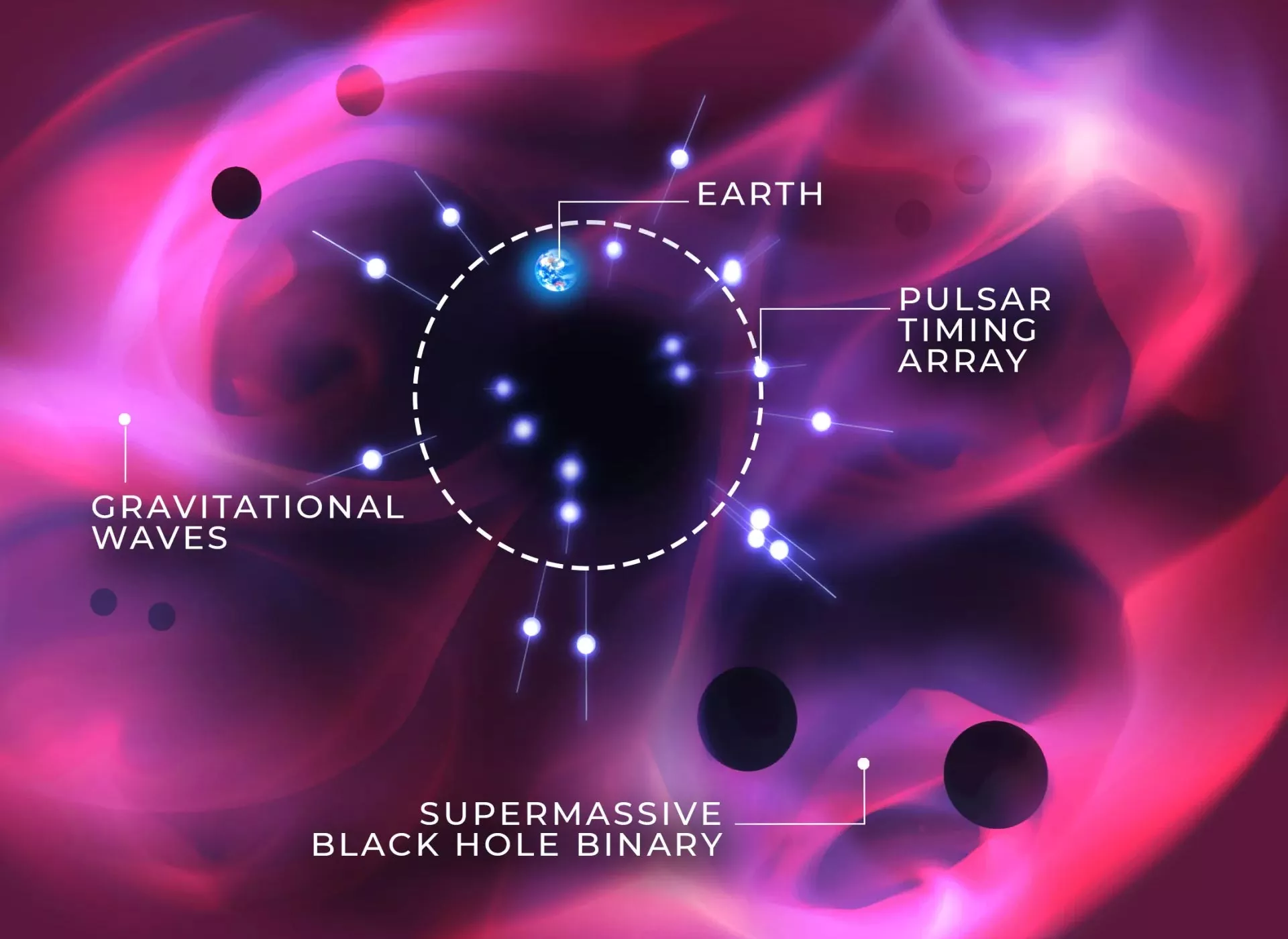Gravitational wave is a ripple of space-time curvature caused by accelerated mass. It is a wave that propagates outward from the source at the speed of light. Although we do not need a huge celestial body to generate gravitational waves, our human instruments can only detect gravitational waves generated by the extreme acceleration of very large celestial bodies, such as the double orbits of black holes.
Giant black holes lie at the center of most galaxies. These black holes are very heavy -- their mass can be one million to one billion times more than the mass of the sun, so they are called supermassive black holes.
As galaxies move through the universe, they occasionally merge. When this happens, the supermassive black holes they carry tend to migrate to each other and form a binary system. When the two black holes orbit each other, they distort the structure of space and time around them and produce gravitational waves, which ripple in the universe. These gravitational waves complete a complete oscillation every year or so as they travel through space and are classified as low-frequency gravitational waves.
The universe is full of these supermassive black hole binary systems. The gravitational waves they emit fill the space and form a background called random gravitational waves. Scientists are trying to use a complex network of radio telescopes called pulsar timing arrays to find gravitational wave signals from this background, but it may be many years before a confirmed detection result is available.

For this reason, cosmological simulations are often used to predict what this gravitational wave signal might look like. This type of simulation helps scientists understand the structure and history of the universe by tracking the flow of matter and energy from shortly after the big bang to today.
The research team led by graduate researcher Bailey Sykes (from Monash University) and several ozgrav scientists, including Dr. Hannah Middleton, associate researcher of ozgrav, recently made new predictions about the strength of this gravitational wave signal. The new estimate is based on data from the massiveblack-ii simulation, which is known to simulate a large space region similar to our own universe.
The research team made two estimates: one is that once their host galaxies collide, supermassive black holes will merge almost immediately; The other is that once two black holes are paired in a binary system, they need time to sink towards each other. This second estimate is very important, because during this period, the gravitational wave output of the super massive binaries will also change due to the interaction between stars and gas near the binaries.
It is reported that the gravitational wave signal simulated by massiveblack-ii is similar to other predictions in previous studies. It is smaller than the signal that can be detected by the pulsar timing array at present. However, with the improvement of the sensitivity of telescope technology, the confirmed detection may be not far away.
The results of this study add valuable insights to the existing signal prediction and provide an important reference point for the future pulsar timing array. The step-by-step accurate estimation of the background of random gravitational waves can be used to further understand other astrophysical phenomena, including the interaction between stars and gas that affect the merging supermassive black holes.